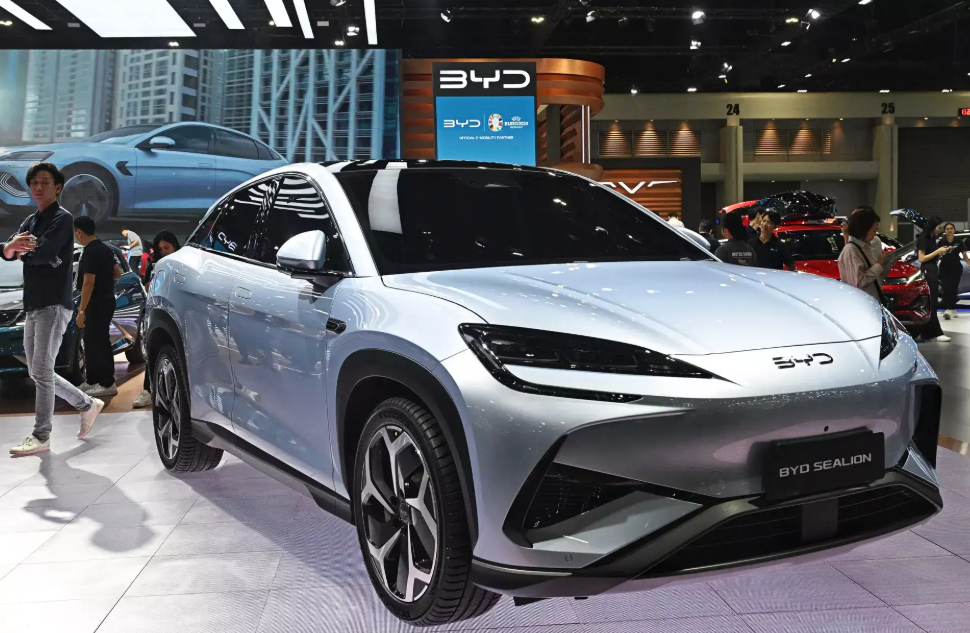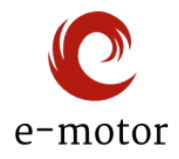The Australian automotive landscape is witnessing a seismic shift, and Chinese electric vehicle powerhouse BYD is positioned right at the epicenter of this transformation.
With explosive growth momentum and an audacious target of 40,000+ sales in 2025, BYD isn’t just aiming to compete – they’re gunning for a coveted top-10 brand position that would put them ahead of established players like GWM and Nissan.
The Numbers That’ll Blow Your Mind
BYD’s Australian success story reads like something out of a business school case study. In less than three years on-sale, BYD has sold its 40,000th vehicle in Australia, achieving what took Tesla a decade to accomplish.
But here’s where it gets really exciting – BYD now expects to sell 40,000 vehicles or more in Australia in 2025 alone. That’s not just growth; that’s automotive domination in fast-forward mode.
Breaking Into the Big League: Current Market Position
BYD tripled its sales year-on-year and broke into the Top 10 for the first time directly at #7, becoming the best-selling Chinese brand in Australia for the first time. This March 2025 breakthrough moment signals that BYD’s strategy is working.
The current top-10 landscape shows BYD sitting pretty at seventh place, with direct competitors GWM at #8 and established players like Nissan within striking distance. The Chinese brand’s meteoric rise puts them in prime position to leap-frog these rivals.
The Game-Changing Vehicle Leading the Charge
BYD Shark 6: The Ute That’s Rewriting Rules
The BYD Shark 6 PHEV isn’t just another ute – it’s a market disruptor that’s sending shockwaves through Australia’s tradesman community. The BYD Shark 6 spectacularly repeated at #6 with a record 2.5% share, proving that last month’s result was not a fluke.
This plug-in hybrid dual-cab combines the best of both worlds: electric efficiency for daily driving and traditional combustion power for heavy-duty work. With over 2,000 orders already secured, the Shark 6 is proving that Aussie tradies are ready to embrace electrified transport.
Model Lineup That Covers All Bases
BYD’s comprehensive vehicle range includes the affordable Dolphin, premium Seal sedan, popular Atto 3 SUV, and the new Sealion 7. BYD hopes its standing in Australia will begin to reflect its volume and stature in its home market, with expectations of over 40,000 sales by the end of 2025.
The strategic diversity across segments means BYD isn’t putting all eggs in one basket – they’re competing everywhere from budget-conscious families to luxury-seeking professionals.
The Master Plan: Five Strategic Pillars
1. Product Tsunami Strategy
BYD announced a stunning ambition to double its sales every year in Australia out to at least 100,000 in 2026, driven by the roll-out of as many as five new models each year. This product blitz ensures constant market excitement and fresh showroom traffic.
The new model pipeline includes the anticipated Atto 2 small SUV, seven-seat family SUV, and potentially the luxurious Denza brand arriving later in 2025. Each launch targets specific market segments where competitors are vulnerable.
2. Aggressive Pricing That Disrupts Competition
BYD’s pricing strategy is nothing short of revolutionary. The Dolphin Essential became Australia’s most affordable EV and the first to break the $30,000 barrier (retailing for $29,990, before on-road costs).
This price-point leadership forces established brands to either match BYD’s value proposition or risk losing market share to the Chinese challenger.
3. Dealer Network Expansion Blitz
The dramatic BYD model expansion in Australia will be accompanied by a 500 per cent lift in marketing spend and an expansion of the dealer network from 35 outlets today to more than 70 by the end of 2024.
Accessibility is everything in automotive retail, and BYD’s dealer multiplication strategy ensures customers can experience their vehicles nationwide.
4. Marketing Investment That Builds Brand Awareness
The 500% marketing spend increase isn’t just throwing money at advertising – it’s about building genuine brand recognition in a market where many Australians still ask “what’s a BYD?”
“You will see a huge investment this year in marketing, in awareness, in vehicle awareness,” Smitherman promised. This awareness campaign targets both early adopters and mainstream buyers.
5. Technology Leadership with Competitive Advantage
BYD’s vertical integration sets them apart from traditional automakers who rely on supplier networks. BYD’s vertical integration, cost efficiency, and aggressive international expansion are accelerating its global rise.
The company’s battery technology expertise and manufacturing scale create cost advantages that translate into better value for Australian consumers.
Who’s in BYD’s Crosshairs?
GWM: The Direct Chinese Rival

GWM delivered 3566 vehicles in November, surpassing its full-year 2023 result of 36,397 units and securing a new annual sales record for the fifth consecutive year. However, BYD’s momentum suggests the roles could reverse quickly.
GWM’s challenge lies in their heavier reliance on traditional powertrains, while BYD’s electrified portfolio aligns better with Australia’s emissions regulations and consumer trends.
Nissan: The Established Player Under Pressure
Nissan’s vulnerability stems from their slower electrification timeline and limited EV offerings in Australia. While Nissan focuses on gradual hybrid adoption, BYD is revolutionizing entire vehicle categories with plug-in hybrid and full electric alternatives.
The generational shift toward electrified transport favors brands like BYD that prioritize this technology from day one.
The Global Context: Why BYD Will Succeed
World’s Largest EV Manufacturer Backing
In 2024, BYD sold exactly 4.27 million new energy vehicles (4,272,145 units), marking a 41.26% year-on-year increase. This global scale provides economies of scale and R&D investment that smaller competitors simply cannot match.
BYD aims to double its sales outside China to more than 800,000 cars in 2025, with Australia representing a key strategic market in this expansion.
Technology Pipeline That Keeps Advancing
BYD’s innovation trajectory includes solid-state batteries by 2027, advanced driver assistance systems at no extra cost, and smart driving technologies launching globally in 2026-2027.
Market Dynamics Working in BYD’s Favor
Australian EV Adoption Accelerating
Sales of electric cars in Australia inched up in 2024. A total of 91,292 pure battery electric vehicles (BEVs) were added to Australian roads throughout the year. While Tesla struggled, BYD grew 14.6% and solidified its #2 EV position.
Government incentives, rising fuel costs, and environmental consciousness are driving more Australians toward electrified vehicles – BYD’s specialty.
Chinese Brand Acceptance Growing
Chinese automotive brands are gaining legitimacy and consumer acceptance in Australia. China up 21% to 21,358 units in March 2025 demonstrates this trend clearly.
Quality perceptions are shifting as Chinese brands demonstrate reliability, technology leadership, and value for money that rivals established players.
What Could Derail BYD’s Ambitions?
Supply Chain Challenges
Global semiconductor shortages and shipping disruptions could impact BYD’s ability to meet aggressive sales targets. However, their vertical integration provides more supply chain control than traditional automakers.
Competitive Response
Toyota, Ford, and other established brands won’t surrender market share without a fight. Price wars and accelerated electrification from competitors could intensify competition.
Regulatory Uncertainty
Government policy changes around EV incentives or Chinese imports could affect BYD’s competitive position.
Why BYD Will Hit Top-10
BYD’s combination of aggressive pricing, comprehensive product range, cutting-edge technology, and massive global backing creates a perfect storm for Australian market success.
The 40,000+ sales target for 2025 isn’t just achievable – it’s conservative considering their current trajectory. When you’re tripling sales year-over-year and launching game-changing vehicles like the Shark 6, overtaking GWM and Nissan becomes inevitable rather than aspirational.
Australian car buyers are clearly ready for what BYD offers: advanced technology, competitive pricing, and genuine alternatives to traditional automotive choices. The question isn’t whether BYD will crack the top-10 – it’s how quickly they’ll climb even higher.
Short FAQs
Q: What is BYD’s sales target for Australia in 2025? Over 40,000 vehicles, representing a massive increase from their previous years.
Q: Which BYD model is driving the most sales growth? The BYD Shark 6 PHEV ute is leading the charge with over 2,000 orders and strong monthly sales.
Q: How does BYD compare to Tesla in Australia? BYD is now the #2 EV brand behind Tesla, with 12,438 sales in 2024 and growing market share.
ALSO READ: BYD Shark 6 100km EV Range Disrupts Outback Drives

